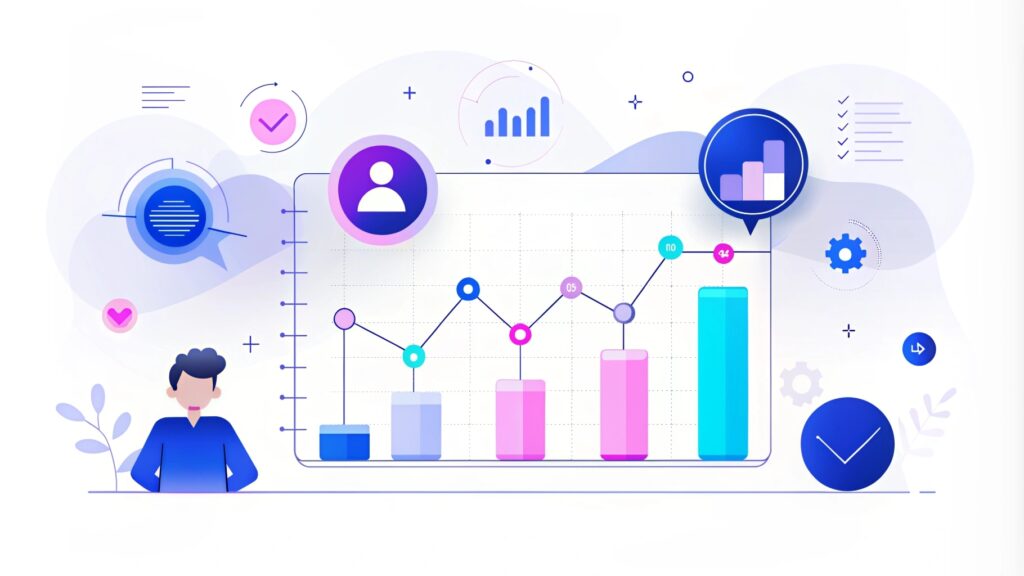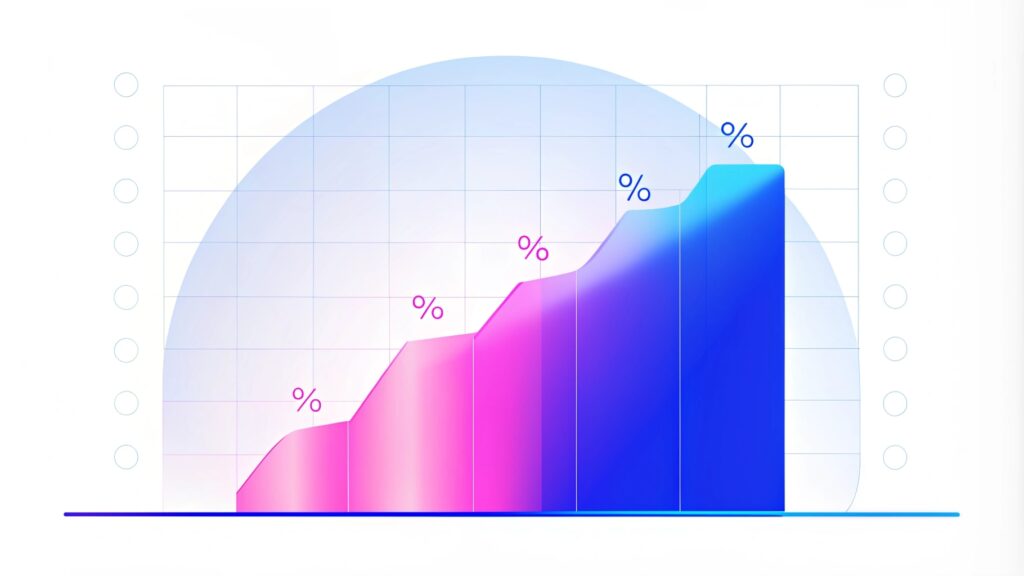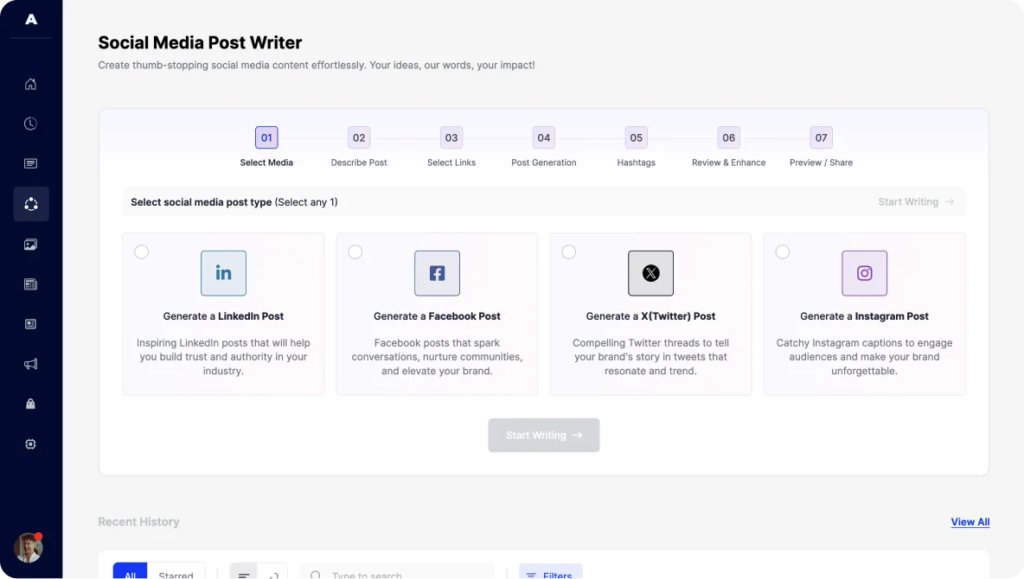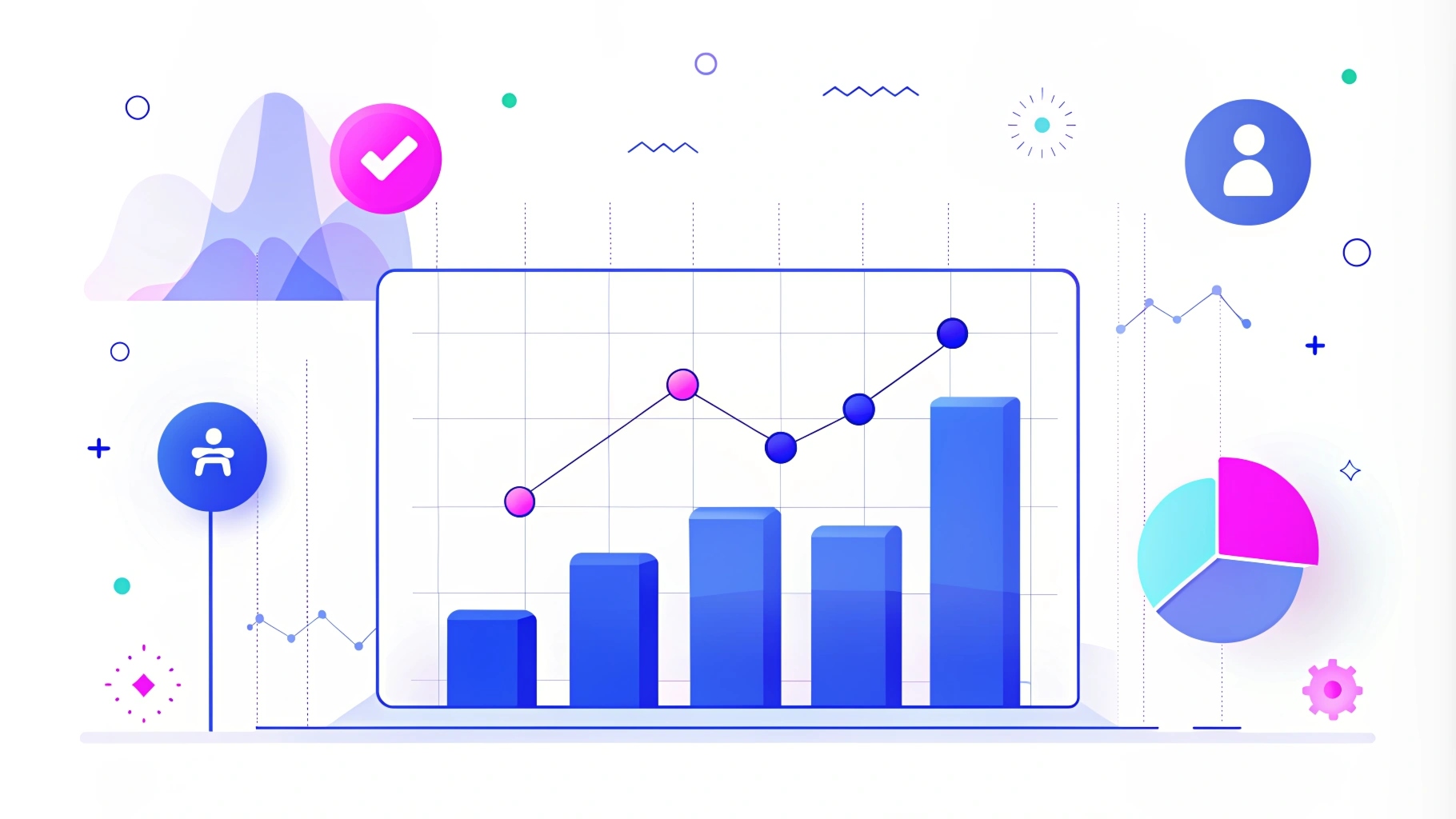In digital marketing, understanding and effectively leveraging social media metrics is a necessity. From gauging audience engagement to optimizing return on investment (ROI), these metrics provide crucial insights that can make or break your social media marketing. Implementing strategies to boost social media engagement is key to success in this domain.
In this comprehensive guide, we delve deep into the significance of each metric, how they work, and why they still matter in today’s digital landscape.
Key Takeaways
- Understanding the importance of tracking social media metrics and how they impact your overall marketing strategy.
- The top 5 engagement metrics and how they can enhance your social media success.
- Analyzing the role of reach and impressions in a comprehensive social media strategy.
- Discovering how conversion metrics are essential for ROI calculation.
- Learning how to build brand reputation through effective response rate and time monitoring.
- Examining platform-specific social media metrics and their significance.
Gain an in-depth understanding of the key metrics to track, their nuances, and how they can be effectively harnessed for a successful and impactful social media strategy. Whether you’re a seasoned social media marketer or just getting started in the digital space, these key insights will equip you with the knowledge you need to maximize your social media efforts and build customer loyalty.
Quick Summary Powered by Addlly AI
ToggleWhy You Should Track Social Media Metrics

Social media metrics provide valuable insights into audience engagement, brand reach, and overall marketing performance. Tracking these metrics is an integral part of developing an effective social media strategy. But why is this so crucial? Here’s why:
1. It Helps you Understand Consumer Behaviour
At the heart of every marketing strategy lies a profound understanding of consumer behaviour. Social media metrics, such as likes, shares, and comments, offer an immediate and quantifiable glance into your audience’s preferences. A Hootsuite study revealed that 52% of online brand discovery happens in public social feeds.
2. It can Boost Brand Visibility
Brand visibility is a vital aspect of growth, and social media metrics provide a roadmap for this. Specific metrics like impressions and reach illustrate the extent of your brand’s exposure.
3. You can Use it to Optimize Marketing Strategies
Metrics such as click through rates (CTRs) and conversion rates offer invaluable insights into the effectiveness of your marketing strategies. With 5.07 billion people using social media worldwide, tracking these metrics helps optimize your campaigns, ensuring maximum ROI.
4. It Helps Enhance Customer Engagement
Engagement metrics, including likes, shares, and comments, serve as a barometer of your audience’s interest level. These metrics can help to foster a more personalized and interactive relationship with your audience.
Each metric plays a pivotal role in navigating the dynamic landscape of social media marketing for businesses across the globe. By comprehensively tracking important social media metrics, businesses are able to not only understand their audience better, but also optimize their marketing strategies, enhance brand visibility, and boost customer engagement.
Generative AI is revolutionizing how businesses approach social media, with tools that can automatically create high-quality, engaging content at scale.
To learn more about how to leverage the power of AI for your social channels, check out this in-depth guide on how to use generative AI in social media.
Top 5 Engagement Metrics to Monitor for Social Media Success

Engagement metrics integral to social media success, providing insights into how users interact with your content, on top of awareness metrics. Here are the top 5 engagement metrics that can help steer your social media campaigns towards success.
1. Likes and Reactions
Likes and reactions are the most basic form of engagement on social media, and in some cases, are more important than follower count. While these might seem simplistic, they are an immediate indicator of how your content resonates with your audience. To enhance this engagement, leveraging AI can be particularly beneficial. For instance, tools like those discussed in the article on how to use AI to grow Instagram can help create compelling content, optimize posting times, and analyze audience sentiment, ultimately leading to increased likes and reactions.
2. Shares and Retweets
Shares and retweets are a step beyond likes, indicating that users found your content valuable enough to spread within their network. A Buzzsumo analysis found that content with a strong emotional hook gets more shares, underscoring the importance of crafting compelling content.
3. Comments
Comments provide a deeper level of engagement, offering qualitative insights into your audience’s thoughts and opinions. They also provide an opportunity to interact directly with your audience, fostering a sense of community. An Adobe study revealed that posts with a higher engagement rate have more comments.
4. Click Through Rate (CTR)
CTRs measure the percentage of users who clicked on a link within your post. A high click through rate indicates that your social media content effectively incites action, a crucial aspect of converting social media engagement into tangible results.
5. Engagement Rate Per Follower (ERPF)
ERPF is a comprehensive metric that considers the number of engagements (likes, shares, comments) relative to your follower count. This metric provides a more accurate view of your content’s performance as compared to follower growth or net new followers.
Tracking these five social media metrics can significantly enhance your digital strategy, fostering deeper connections with your audience and driving more tangible outcomes. By understanding and leveraging these important metrics, businesses can transform their social media presence, turning passive viewers into active participants and advocates for their brand, eventually improving follower growth.
Measuring Reach and Impressions for a Comprehensive Social Media Strategy

Understanding the scope of your social media presence is crucial for a well-rounded strategy. Two important social media metrics that offer insights into this aspect are ‘reach’ and ‘impressions’.
Defining Reach and Impressions
Reach represents the total number of unique users who have seen your social media content, while impressions indicate the total number of times your content was displayed, regardless of whether it was clicked on.
The Importance of Measuring Reach
Measuring reach helps to gauge the extent of your potential audience, both generally and within different audience demographics. It reflects the effectiveness of your distribution strategy, and a high reach can indicate strong brand awareness. A recent report from Hootsuite shows that brands with a high reach can engage with up to 40% more audience members.
The Significance of Tracking Impressions
Impressions offer insights into the visibility of your content. A high number of impressions indicates that your content frequently appears in user feeds, which can boost brand recognition.
Reach vs Impressions: Which One Matters More?
While both metrics offer valuable insights, the importance of each depends on your specific goals. If you’re aiming to increase brand awareness, reach might be more important. Conversely, if you’re looking to maintain consistent brand visibility, impressions should be your focus.
Utilizing Reach and Impressions Data
Understanding reach and impressions can help tailor your social media content strategy, optimize posting times, and target the right audience. Brands that use these metrics to inform their strategies will see an improvement in engagement.
In the broader perspective of the key metrics to track, measuring reach and impressions provides a foundational understanding of your brand’s visibility and potential audience size on social media platforms. By tracking these metrics, you can fine-tune your social media platform strategy, ensuring your content resonates with the right audience at the right time, thereby driving success in your social media endeavors.
Conversion Rate: The Ultimate Metric for ROI Calculation

Your conversion rate is the percentage of users who complete a desired action out of the total number of users who interact with your content. Conversions are a definitive measure of the effectiveness of your social media strategy, directly linking your efforts to tangible results. In this competitive landscape, conversions take center stage in determining your ROI. It is also important to measure social media success, so let’s explore how this plays out.
Understanding Conversion Rate in Social Media
Conversions represent the actions you want users to take after interacting with your social media content, such as making a purchase, signing up for a newsletter, or downloading an app. Businesses that prioritize conversion tracking are 2x more likely to see large increases in sales.
The Role of Conversions in ROI Calculation
Conversions are a direct measure of ROI, representing the returns on your social media investments. By tracking conversions, you can quantify the effectiveness of your social media marketing efforts. A recent Salesforce study found that 52% of marketers cite difficulties in accurately measuring ROI from their social media marketing strategies, emphasizing the need for focused conversion tracking.
Improving Conversions for Better ROI
Improving conversions can significantly boost your ROI. Tactics can include optimizing your call-to-action, targeting a more specific audience, or improving the user experience on your landing page. An Econsultancy report found that for every $92 spent acquiring customers, only $1 is spent converting them, highlighting the potential for improvement.
Tracking Conversions: Tools and Techniques
Several social media tools like Google Analytics, Facebook Pixel, and Twitter Conversion Tracking can help track conversions efficiently. A good social media analytics tool offers detailed insights and allow for accurate ROI calculation. A recent CMO survey revealed that the use of marketing analytics—for which conversion data is key—has increased on average by 61% in five years.
Tracking conversions, and using tracking tools such as Google Analytics, is paramount in understanding the real impact of your social media strategy. Conversions offer a direct link between your social media efforts and the ROI, providing an ultimate benchmark for success. By focusing on conversions, you can optimize your strategies to achieve better ROI, maximizing the value derived from your social media campaigns.
Building Brand Reputation through Response Rate and Time Monitoring
Response rate and response time are critical for building a positive brand reputation. These metrics reflect your brand’s commitment to customer service and engagement on many social media platforms. Let’s delve into how they contribute to a robust social media strategy.
The Importance of Response Rate
Response rate is the percentage of customer inquiries on social media that your brand responds to. A high response rate indicates a dedicated customer service approach, which can boost brand reputation.
How Response Time Impacts Brand Image
Response time measures how quickly your brand responds to customer inquiries on social media. A quick response time shows your audience that you value their time and feedback. A study by Harvard Business Review revealed that companies that respond to customer queries within an hour are nearly 7 times more likely to convert the lead.
Response Rate and Time: The Role in ROI Calculation
Monitoring your response rate and time can provide valuable insights into your customer service efficiency and customer journey. Tools like Facebook Insights and Twitter Analytics can provide these metrics.
A high response rate and quick response time can lead to improved customer satisfaction, increased customer retention, and ultimately, a higher ROI.
Platform-Specific Social Media Metrics to Track
Each social media channel has unique features and user behavior patterns, necessitating platform-specific social media metrics. Understanding these metrics can help optimize your social media strategy for each platform and content for your target audience.
Facebook: Relevance Score and Negative Feedback
Facebook’s Relevance Score rates your content based on expected positive engagement, helping you understand your content’s quality and relevance. Moreover, negative feedback shows how many users hid your post or reported it as spam.
Instagram: Saves and Story Exits
On Instagram, the ‘Saves’ metric reveals how many users saved your post for later, indicating high-quality, valuable content. Story exits show how many users left in the middle of viewing your story, helping to identify less engaging content. A recent report from Instagram revealed that 90% of its users follow at least one business account, underlining the importance of these metrics.
Twitter Metrics: Engagement Rate and Link Clicks
Twitter’s Engagement Rate is the number of engagements divided by impressions, which measures how well your audience interacts with your social media posts. Link clicks indicate how many users clicked on a link in your tweet, showing the effectiveness of your call-to-action. Tweets with links receive much more retweets.
LinkedIn: Click Through Rate and Social Actions
On LinkedIn, CTR shows the percentage of users who clicked a link in your post out of the total impressions. Social actions measure the total number of likes, comments, and shares your post received. According to LinkedIn, posts with images receive a 2x higher comment rate.
YouTube: Watch Time and Audience Retention
For YouTube, watch time is the total amount of time users spent watching your videos and the video completion rate, while audience retention shows the average percentage of a video that viewers watched, as measured by Google Analytics. A YouTube report shows that channels and videos with higher watch times are likely to show up higher in search results and recommendations.
By understanding and tracking these metrics on your social media channels, you can tailor your strategies to each platform’s unique characteristics and user behaviors, maximizing your content effectiveness. These metrics provide a comprehensive view of your social media platform performance, aiding in informed decision-making and strategy optimization.
Improve Your Social Media Engagement with Addlly AI

Maximizing social media engagement is a critical aspect of digital marketing. Addlly AI, a cutting-edge artificial intelligence platform, provides a comprehensive solution to optimize your social media content metrics.
Addlly AI social media post generator uses advanced machine learning algorithms for social listening, providing actionable insights to boost engagement. It also helps generate engaging social posts in just a few clicks, complete with trending hashtags across the various social media channels.
Real-Time Monitoring and Insights
Addlly AI offers real-time monitoring of what’s trending, providing instant feedback on your posts and campaigns. This allows for quick adjustments and optimizations, enhancing your overall social media content performance.
Personalized Audience Targeting
By analyzing user behavior and engagement patterns, Addlly AI helps focus your target audience more effectively, ensuring your content reaches the right people at the right time.
Streamlined Efficiency with Addlly AI
With audience insights and effective targeting, Addlly AI helps improve your social media ROI through engaging content, making it a comprehensive solution from start to finish. By leveraging the power of AI, businesses can gain deeper insights into their social media performance, enabling them to make data-driven decisions and significantly improve their engagement rates and ROI.
Charting a Path Forward with Social Media Metrics
It’s clear social media data serve as compass points in the vast landscape of digital marketing. From understanding the importance of tracking metrics, to diving into the specifics of reach and even platform-specific metrics, we’ve seen how these contribute to a successful overall strategy.
Whether it’s Facebook’s Relevance Score, Instagram’s Saves, Twitter’s Engagement Rate, LinkedIn’s Click-Through Rate, or YouTube’s Watch Time (video completion rate), each platform offers unique metrics that can guide your social media strategy.
The introduction of AI tools like Addlly AI has further revolutionized this space, offering real-time insights and streamlining the content creation process. As businesses continue to navigate the digital space, these tools will undoubtedly become even more critical.
By staying informed about the latest developments in social media metrics, businesses can ensure they’re poised to leverage the full potential of their social media marketing. As we’ve seen, understanding and effectively using these key social media metrics are a path to success and a necessity in the digital age.
Author
-
I'm the Head Editor at Addlly AI, where I lead all things content - from refining SEO articles and creative socials, to building scalable content systems that align with brand voice and business goals. My background spans 15+ years across tech, content strategy, and agency work, including leading content for APAC brands and shaping narratives for enterprise clients. I’ve edited for impact, managed teams, and built content that converts. At Addlly, I focus on making sure every piece - whether human-written or AI-generated - feels intentional, aligned, and clear. Good content should be easy to read, hard to ignore, and impossible to mistake for someone else’s.
View all posts

